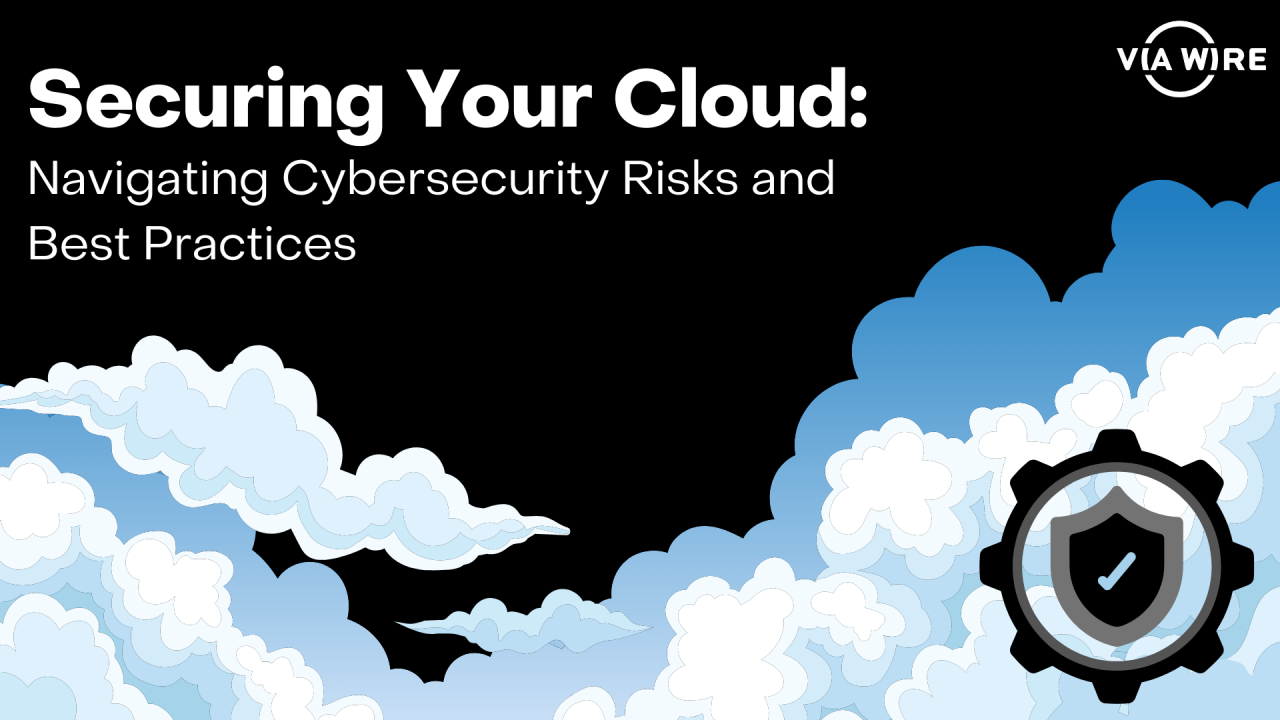As businesses increasingly migrate their operations to the cloud, the importance of robust cybersecurity practices cannot be overstated. While the cloud offers unparalleled flexibility and scalability, it also presents unique challenges and risks that require careful consideration.
Let’s delve into the world of cybersecurity in the cloud, exploring both the challenges and best practices for businesses.
Challenges in Cybersecurity for Cloud Environments:
1. Data Breaches: With data dispersed across multiple servers and platforms, the risk of data breaches increases. Unauthorised access, misconfigurations, or insider threats can compromise sensitive information stored in the cloud.
2. Compliance Concerns: Compliance with industry regulations and data protection laws becomes more complex in a cloud environment. Businesses must navigate varying regulatory requirements while ensuring data privacy and security.
3. Shared Responsibility Model: Cloud service providers operate on a shared responsibility model, where they secure the infrastructure, but businesses are responsible for securing their data and applications. This division of responsibility can lead to misunderstandings and gaps in security measures.
4. Lack of Visibility and Control: The dynamic nature of cloud environments makes it challenging for businesses to maintain visibility and control over their assets. Rapid deployment of resources, shadow IT, and decentralised management can lead to security blind spots.
Best Practices for Cybersecurity in the Cloud:
1. Implement Strong Identity and Access Management (IAM): Adopt robust IAM practices, including multi-factor authentication (MFA), role-based access control (RBAC), and regular audits of user permissions. Limit access privileges to only those who require them.
2. Encrypt Data: Encrypt data both at rest and in transit to protect it from unauthorised access. Utilise encryption services provided by your cloud provider or implement third-party encryption solutions for additional security layers.
3. Continuous Monitoring and Threat Detection: Implement automated monitoring tools and threat detection systems to identify suspicious activities, anomalies, or security incidents in real-time. Regularly review logs and conduct security assessments to stay proactive.
4. Secure Configuration and Patch Management: Follow best practices for configuring cloud resources securely and promptly apply patches and updates to mitigate vulnerabilities. Regularly assess and remediate misconfigurations to reduce the attack surface.
5. Data Backups and Disaster Recovery: Establish robust data backup and disaster recovery plans to ensure business continuity in the event of data loss or service disruptions. Store backups in geographically dispersed locations and regularly test recovery procedures.
Tips for Businesses:
– Invest in Employee Training: Educate employees about the importance of cybersecurity in the cloud and provide training on best practices for secure usage of cloud services.
– Choose Trusted Cloud Providers: Select reputable cloud service providers with strong security measures and compliance certifications relevant to your industry.
– Regularly Update Security Policies: Review and update your cybersecurity policies and procedures to adapt to evolving threats and changes in cloud technology.
Securing your journey to the cloud requires a proactive and comprehensive approach to cybersecurity.
By understanding the challenges, implementing best practices, and staying vigilant, businesses can harness the power of the cloud while safeguarding their digital assets and maintaining trust with customers.
Stay secure, stay vigilant! 👀




0 Comments